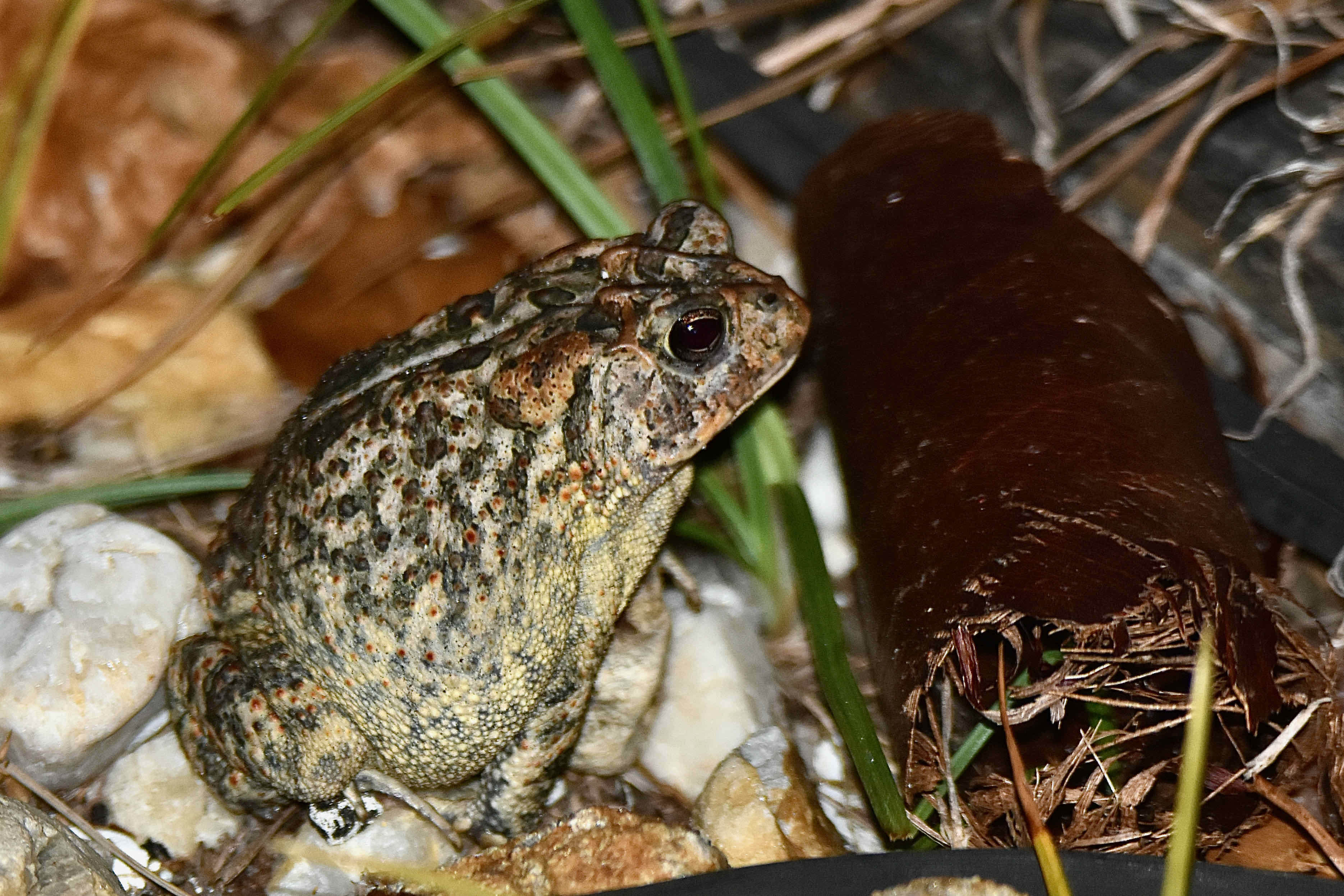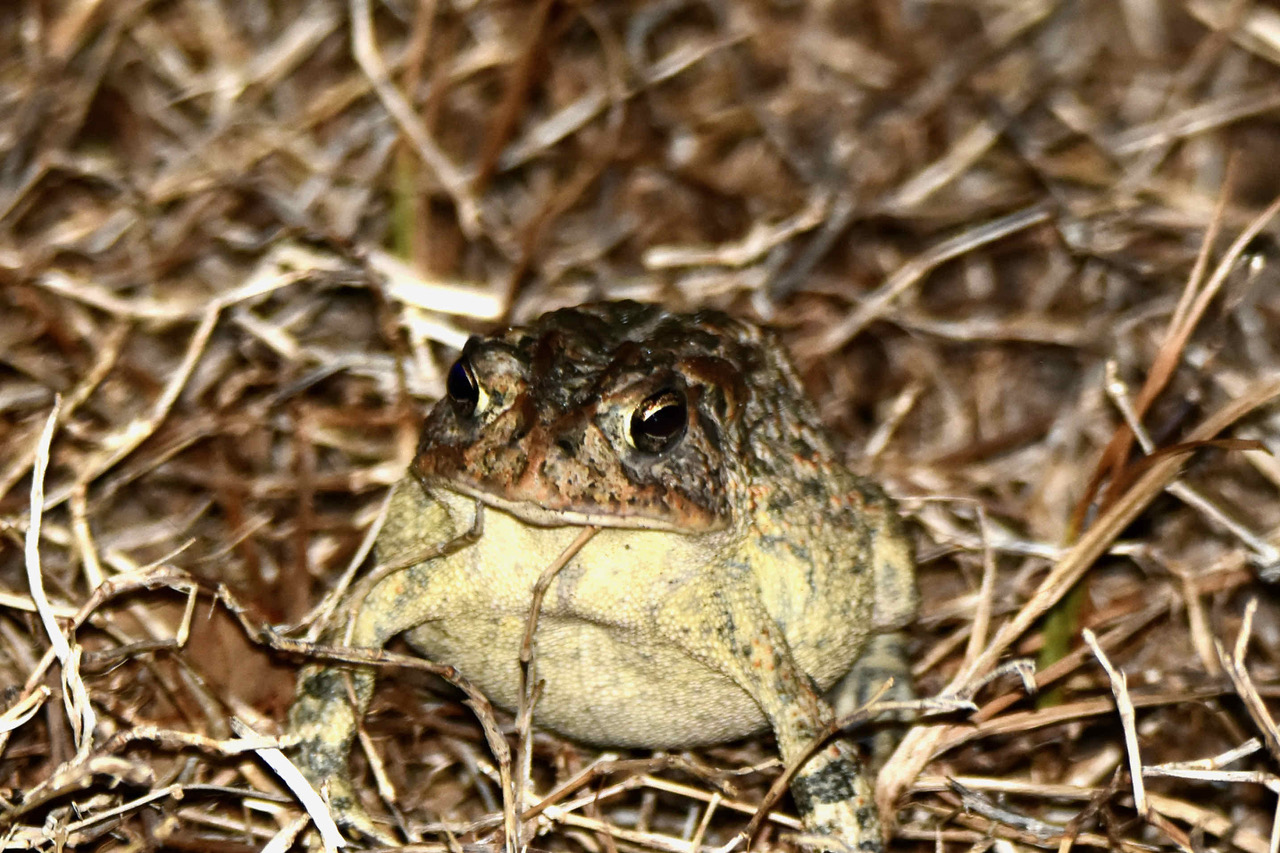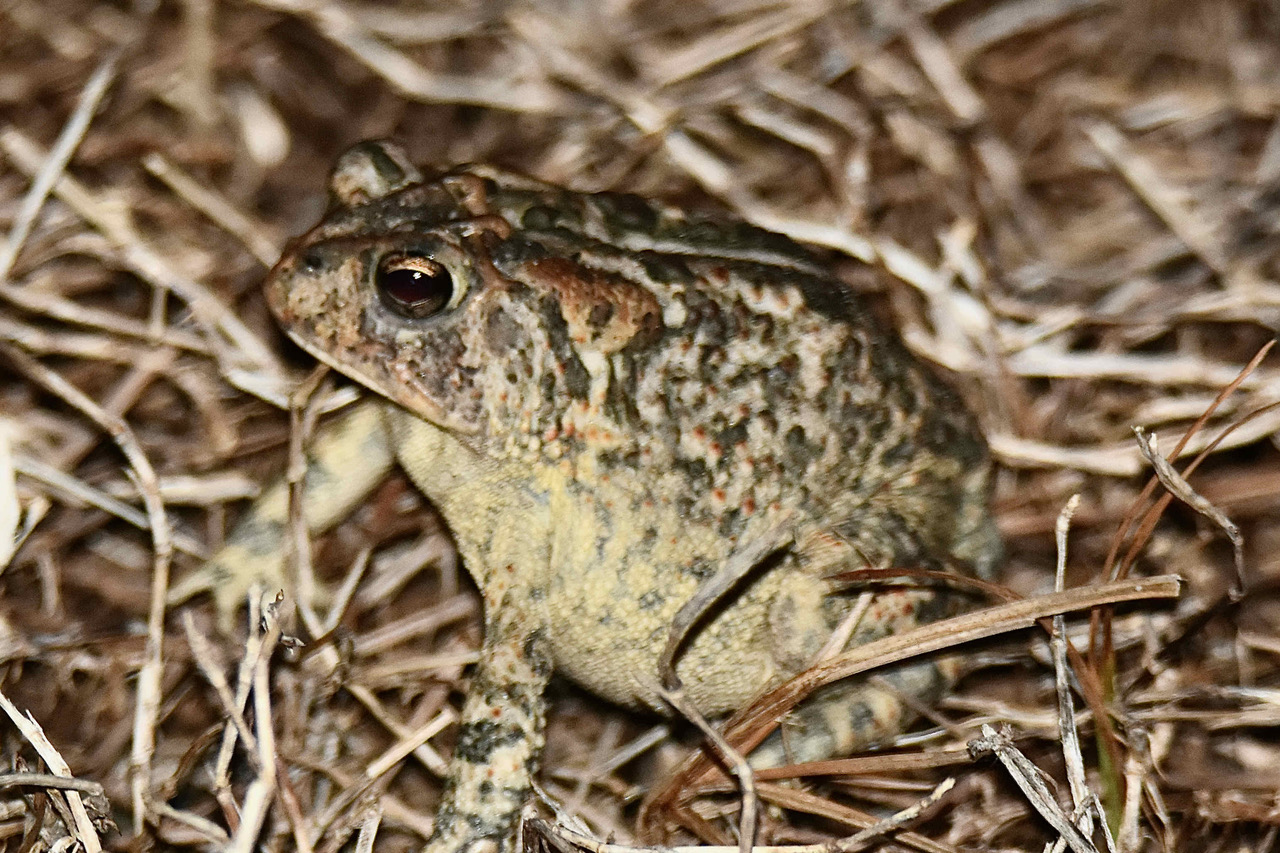
Southern toad, photographed at western Delray Beach, Palm Beach County in 2021.
The southern toad, Anaxyrus terrestris, has an evil twin. Well, not quite a twin. More of an evil look-alike.
The southern toad is a Florida native, but it is similar in looks to the invasive, poisonous nuisance called the giant toad, aka cane toad, aka marine toad, aka bufo toad aka Rhinella marina. The two so resemble each other that it’s easy to confuse one with the other.
And while it’s ok to dispatch a giant toad, humanely, of course, the southern toad is part of the Florida’s natural ecosystems and pretty much should be left alone to do its thing, which includes eating insects like cockroaches.
Fortunately, while the two look alike at first glance, there are fairly easy ways to tell them apart if you know what to look for. More on this in a moment; first some southern toad basics. For more on the giant toad, here's the above link again.
Southern toads are found mostly along the Atlantic and Gulf coastal plains as far north as Virginia, west to Louisiana, including Florida. There’s also an isolated population in northwestern South Carolina. In Florida, they’re found in every part of the state, with one exception: the Upper Keys.
They’re medium-sized as toads go, with a body length between and 1.5 inches and three inches. Some southern toads can reach four inches.
They vary in color from light brown to gray to red to black, with dark blotches all over; the skin has a warty texture.
The southern toad has a large, raised area on each side of the head about where you might expect to find an ear. These are the paratoid glands. On the southern toad, they’re oval-shaped and run roughly in line with the head and body. The giant toad also has paratoid glands, but they tend to be triangular in shape and are roughly oriented northeast to southwest. (If you find this confusing, look at the photos on this page and compare with this.)
The other difference between the two toads is simpler. The southern toad has two dark ridges on the top of its head just behind the eyes; the head of the giant toad lacks these. It’s smooth. The ridges also separate the southern toad from another look alike found in Florida, fowler’s toad, A fowleri.
Southern toads can be found in almost every terrestrial habitat Florida has to offer, but they prefer places with sandy soils — oddly enough, they dig burrows, where they hang out during the day. They also hide under logs and other debris. They’ve adapted to living around humans and do well in urbanized settings as well as natural.
They become active at night, hunting almost any kind of bug they can catch — ants, beetles, crickets, cockroaches, snails and more. They’ll eat bees despite having been stung. In fact, they’ll eat pretty much anything they can get their mouths around and swallow.
Southern toads breed March through October. They’ll collect in both temporary and permanent pools of freshwater, where they’ll mate. There can be so many toads gathered that the chorus they make can be quite loud. It’s been described as a combination hum and whistle. Heavy rains any time of the year can set off these choruses even when the toads aren’t breeding.
Eggs are layed in long, coily strings, between 2,500 and 4,000 per clutch. The eggs hatch into tadpoles in two to four days. In 33 to 55 days, they’ll emerge as fully formed toads. Both the eggs and the tadpoles are poisonous to most predators. Major exceptions: dragonflies and a salamander called the two-toed amphiumas.
They’re not a lot of predators who’ll eat adult southern toads for the same reason. Those paratoid glands that are one of key identifiers of southern toads contain a poison called bufotoxin. One of the toad’s defensive moves will be to lower its head to make the glands more prominent as if to say, this is what you’ll get if you come to eat me. It’ll also inflate its body to make itself appear larger than it really is, hopefully fooling the predator into thinking, its too big of a meal to swallow.
There a few snakes that will eat southern toads, including the hog-nosed, water snakes and the rare eastern indigo snake.
If a southern toad escapes the clutches of dragonflies and snakes, and whatever else out there that might killed, it might live perhaps 10 years or more.
Southern toads are plentiful throughout the range except in places, like South Florida, where its range overlaps that of it invasive cousin, the giant toad. Here, the population seems to be in somewhat of a decline. Competition between the two species for resources doesn’t seem to account for the dropoff. Rather, scientists believe loss of southern toad habitat is the culprit.
Southern toads are members of Bufonidae, the family of true frogs.



